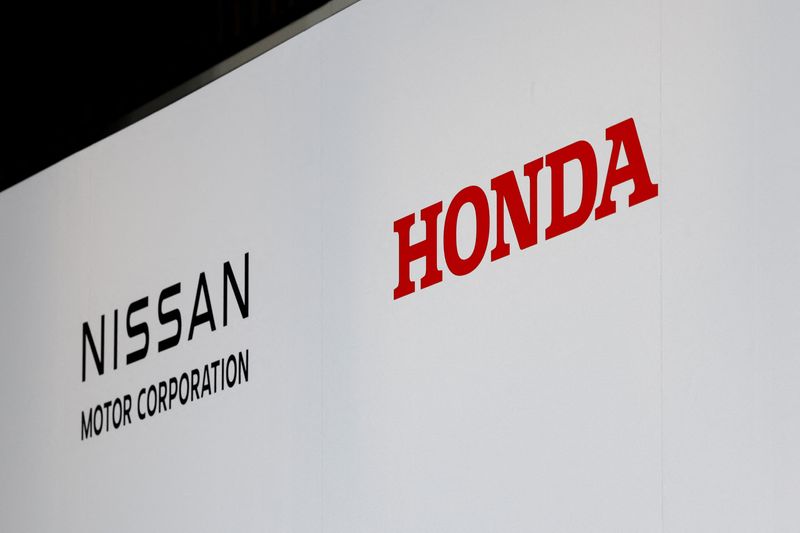Asian car and battery makers hit as Trump gets to work

TOKYO/SEOUL (Reuters) – Shares of Japanese automakers and South Korean battery makers were hit on Tuesday, after U.S. President Donald Trump said he could impose tariffs on Canada and Mexico soon and revoked the previous administration’s executive order on electric vehicles.
The two moves by Trump within hours of his inauguration highlight how changes in U.S. policy could squeeze manufacturing giants in close U.S. allies Japan and South Korea. Car makers are already facing immense disruption from the pivot to electric vehicles and the stunning rise of Chinese rivals.
Trump said that he was thinking of imposing 25% tariffs and that the action could come on Feb. 1. The threat of potential tariffs on the two countries has loomed over Asia’s manufacturing industries for months. Several automakers – and their suppliers – make vehicles in the two countries that they export to the United States.
Shares of Nissan (OTC:NSANY) Motor, Japan’s third-largest automaker, erased morning gains and were in negative territory, down 0.3% at 420.9 yen. Nissan has two plants in Mexico, where it makes the Sentra, Versa and Kicks models for the U.S. market. It exports about 300,000 vehicles to the U.S. a year, Chief Executive Makoto Uchida said in November.
Honda (NYSE:HMC) Motor sends 80% of its Mexican output to the U.S. market, and its chief operating officer Shinji Aoyama warned in November it would have to think about shifting production if the United States were to impose permanent tariffs on imported vehicles.
Shares of Honda also reversed early gains and were down 0.3% at 1,479 yen. They had risen as high as 1,526 yen at the open of trade.
Japanese finance minister Katsunobu Kato on Tuesday said the country would respond “appropriately” after examining the new president’s policies.
Shares of South Korean battery makers dropped, with LG Energy Solution falling 5%, while Samsung SDI (KS:006400) and SK Innovation (KS:096770) lost more than 4% each.







